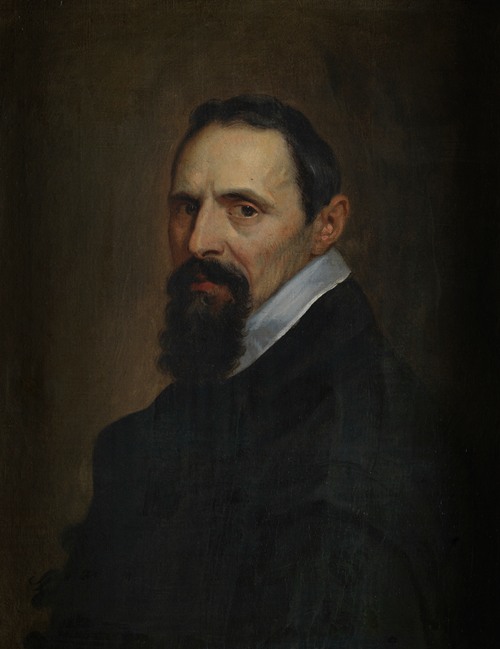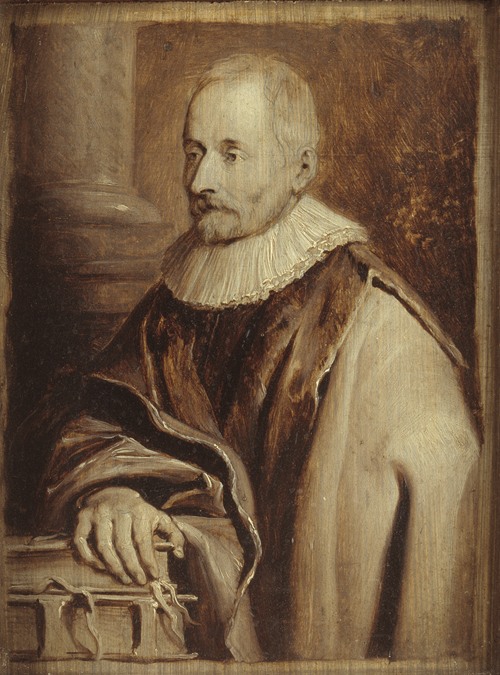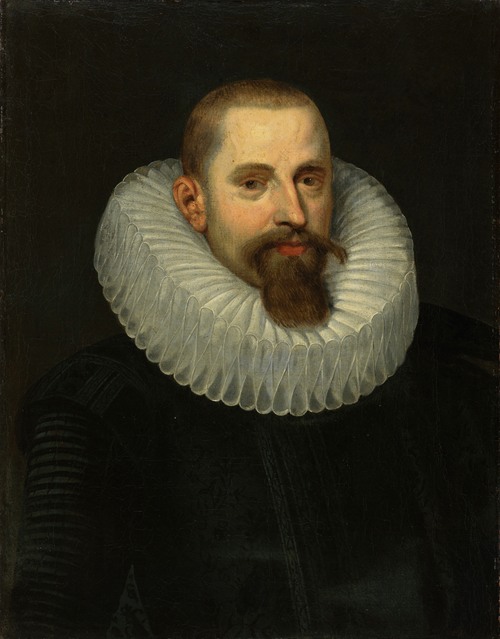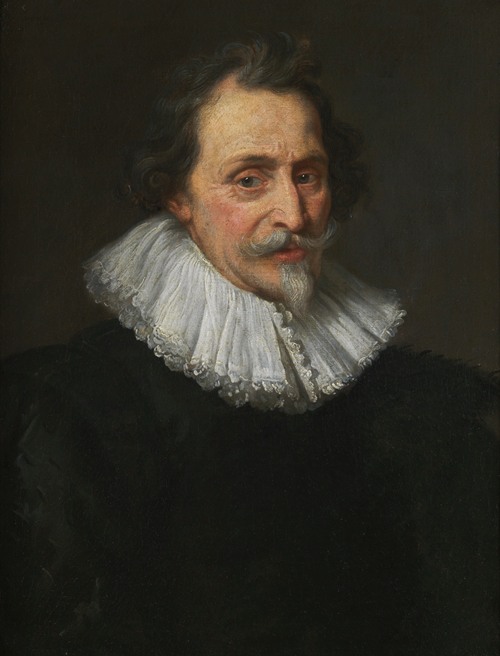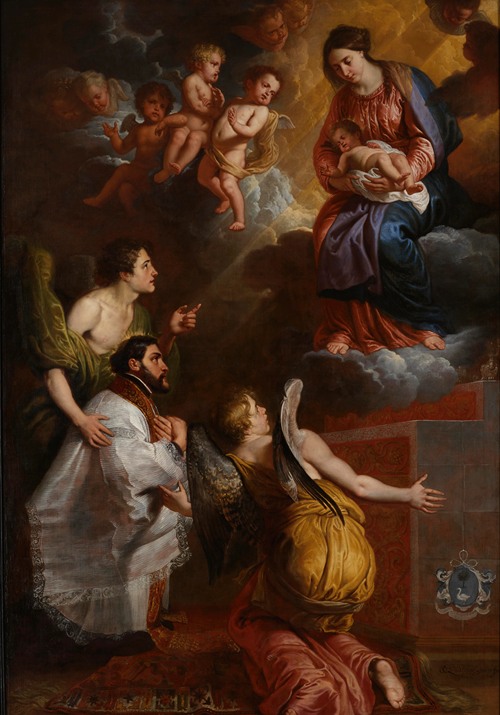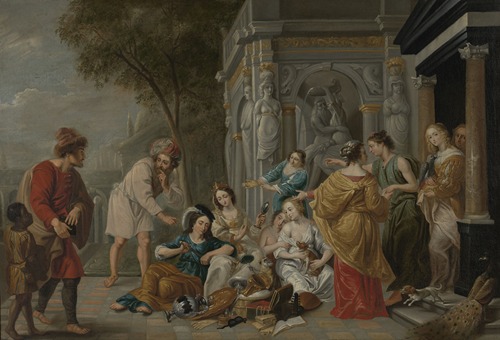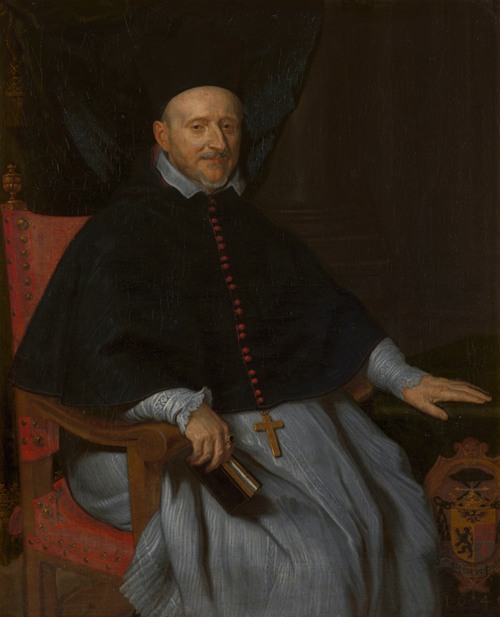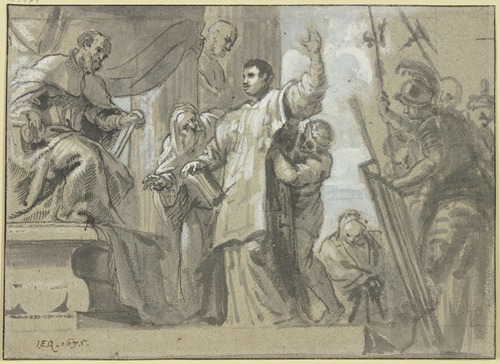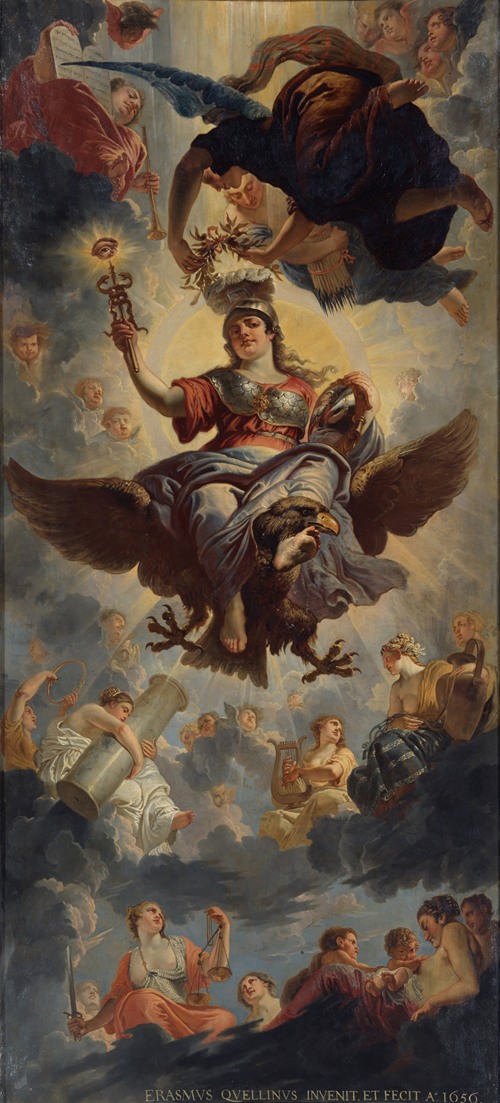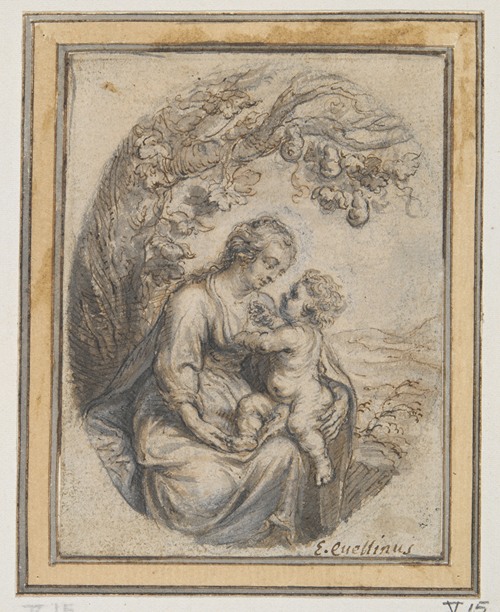

Erasmus Quellinus the Younger or Erasmus Quellinus II was a Flemish painter, engraver, draughtsman and tapestry designer who worked in various genres including history, portrait, allegorical, battle and animal paintings. He was a pupil of Peter Paul Rubens and one of the closest collaborators of Rubens in the 1630s. Following Rubens' death in 1640 he became one of the most successful painters in Flanders. He was a prolific draughtsman who made designs for decorative programmes in the context of official celebrations, for publications by the local publishers and for tapestries and sculptures realised by the local workshops. His work reveals the Classicist trend in the Baroque.
Quellinus was born in Antwerp as the son of Erasmus Quellinus I and Elisabeth van Uden. The Quellinus family became one of the leading artistic families in Antwerp, producing sculptors, painters and printmakers who would develop careers in Flanders and abroad. Father Erasmus Quellinus I, a sculptor, had moved from Sint-Truiden to Antwerp. The brothers of Erasmus Quellinus the Younger were both artists: Artus (1609-1668) was a leading Baroque sculptor and Hubertus (1619-1687) an engraver.
Quellinus commenced his apprenticeship with Jan Baptist Verhaeghe, an obscure artist, in 1633. He became a master of the Antwerp Guild of Saint Luke in 1633–1634. In the 1630s, the artist worked and likely studied in the workshop of Rubens and regularly collaborated on projects with Rubens. In 1634 Erasmus II married Catharina de Hemelaer, a niece of Jan de Hemelaer, the deacon of Antwerp Cathedral. Their son Jan Erasmus followed in his father's footsteps and became a painter.
From the notes made by his son Jan Erasmus in the margin of his copy of Cornelis de Bie's book of artist biographies entitled Het Gulden Cabinet, it is known that Erasmus II obtained a degree in philosophy. This explains the fact that he wrote a philosophical tract entitled Philosophia, which was recorded in the 1679 inventory of his estate.
Quellinus became a regular collaborator of Rubens starting from 1635. He first worked on the decorations for the Joyous Entry into Antwerp of the new governor of the Habsburg Netherlands Cardinal-Infante Ferdinand. Rubens was in overall charge of this project. Quellinus made decorative paintings after designs by Rubens of which six have survived. In the period 1636-1638 Rubens' workshop received a large commission to make mythological decorations for the hunting pavilion Torre de la Parada of the Spanish king Philip IV near Madrid. For this project Quellinus painted decorations after oil sketches by Rubens some of which have been preserved (Prado Museum). In early 1637 Quellinus drew frontispieces for the Antwerp printing house Plantin Press according to Rubens' instructions regarding iconography and layout. These drawings were in Quellinus' own style as Rubens let him a free hand in the design of the modelli.
His brother Artus Quellinus I returned to Antwerp from Rome around 1640. Artus worked in a classicizing style of Baroque under the influence of his compatriot, the sculptor François Duquesnoy, in whose workshop in Rome he had worked. This style had in turn been influenced by the Classicism of Annibale Carracci. The two brothers would from then on work together on various projects and mutually influence each other.
After Rubens' death in 1640 Erasmus Quellinus became one of the leading history painters of Flanders. He received many commissions for altarpieces in the region. In 1648 he was commissioned to make the decorations for the Joyous Entry of the Archduke Leopold Wilhelm into Antwerp, thus playing the same role as Rubens 13 years earlier for the Joyous Entry of Ferdinand. He made the decorations for the announcement of the Treaty of Westphalia in the same year.
Around 1656 Erasmus worked in Amsterdam where his brother Artus was responsible for the decoration of the new City Hall. Erasmus assisted in this project and the brothers also collaborated on other commissions. Erasmus painted altarpieces for clandestine Catholic churches in Amsterdam.
His first wife died in 1662. On 9 November 1663, Erasmus Quellinus II married Françoise de Fren. De Fren was the daughter of the well-off André de Fren, secretary of the Council of Brabant, and the sister of Isabella de Fren, who was married to the court painter David Teniers II. In 1665 Quellinus designed a cenotaph for the deceased Philip IV of Spain and the decorations for the Joyous Entry of Don Francisco de Moura as governor of the Habsburg Netherlands.
Quellinus died in Antwerp on 7 November 1678.
His pupils included his son Jan Erasmus Quellinus, Guilliam Forchondt (II), Julius de Geest, Willem de Ryck, Anthoni Schoonjans, Wallerant Vaillant and Remacle Serin.
